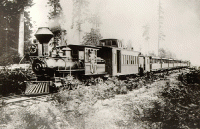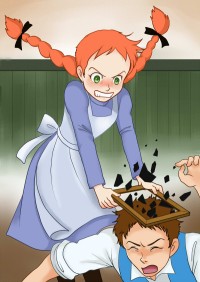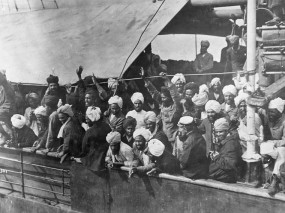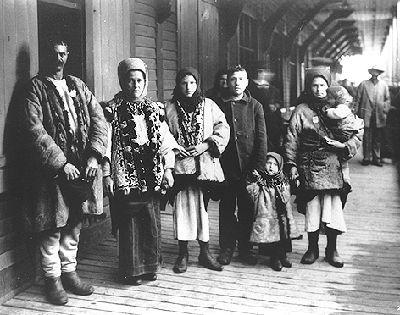In Canada and the rest of the world, renewable resources are the following: trees, animals, and agriculture. What makes all of these items renewable resources is that they can be used more than once due to the fact that they can be reproduced, grown or regenerated. For example, if a tree is cut down another one can be planted which will grow into a full sized tree in a few decades. In nature, a seedling can grow from the stump of a dead tree.

On the other hand, non-renewable resources cannot be reproduced, grown or regenerated quickly. Non-renewable resources include gases, fossil fuels, and minerals. For example, fossil fuels, such as coal take millions of years to form and once used cannot be recreated by humans.

Stewardship is the management of natural resources. Whereas, sustainability is the use of natural resources at or below the rate at which the resource can be reproduced. Stewardship and sustainability are important for the environment because they both ensure the environment stays intact for future generations.
Historically, logging has been an import export and has supported the Canadian economy, especially in British Columbia. A few different methods of logging have been used in the past. The first method is known as hand-logging, which requires only an axe, muscle power, and determination. Hand-logging, like the other methods disturbs the environment, which causes harm to the flora and fauna in the logged areas. However, hand-logging was a popular method of obtaining resources and definitely revolutionized Canadian society. Logs are turned into lumber, which are a primary resource in the Canadian economy and has contributed to the building of homes. Also , hand-logging has contributed to other logging methods, such as clear-cutting and selective logging. Clear-cutting, the second method is still used in certain areas today. Clear-cutting occurs when a logging company uses a large amount of labour resources to cut down every single tree on a mountain slope. Nowadays, this form of logging is not the preferred method because it can cause landslides and add silt into nearby rivers and streams, which causes marine life, such as salmon to choke. Now, a method called selective logging is utilized, which only cuts down a few trees in a selected area, therefore it is better for the environment. Selective logging is less harmful for the environment compared to clear-cutting because only a few trees are cut down.


The mining industry is a large part of Canada’s economy, especially for small towns such as Princeton, BC. Ore is the concentration of minerals in a rock. The minerals can be any element, such as gold, copper and zinc, which makes ores a valuable resource. Ore is mined using two different forms of mining: open-pit and underground. Open-pit mining occurs when a mining company finds a site with a large concentration of valuable minerals. As soon as the valuable resources are confirmed in a certain area by a geologist, the mining company begins to excavate a pit from which the minerals can be extracted. The miners are at less risk of dying or becoming sick compared to underground mining because the miners do not have to go underground. However, open-pit mining has disadvantages, such as tailing ponds, which are basically mine dumps, but when the waste in the tailings ponds are exposed to heavy rain, they can seep into the environment and cause the death of many flora and fauna.



Farming has been an essential part of human civilization for thousands of years. Land use farming has been a main method of farming . All an individual needed was land to start a farm. Industrial farming is used by companies to produce large amounts of crops by using genetically modified seeds and lots of chemicals. Industrial farming is widely used by mega fast food chains, such as McDonalds, Kentucky Fried Chicken, and others. Chickens live in cramped coops, which is a stressful environment for the birds and potatoes are sprayed with poisonous chemicals. On the other hand, organic farming is all-natural without the use of any pesticides or chemical fertilizers. Organic farming also allows chickens to live free-range, which is better for the chickens, thus the quality of the eggs is better too.


Fishing in Canada has been around even before European settlers discovered the region. Spear fishing was used by the Aboriginals of British Columbia to catch salmon . Spear fishing was probably the least convenient method of catching fish and later inspired other methods. Historically, dip-net fishing was a method started by the Karok, an indigenous tribe that lived on the coast of California. Dip-net fishing is now the only legal fishing method used to catch eel, and was practiced for thousands of years on the River Parrett and River Severn. It was a much more convenient method of catching fish, rather than the previously mentioned method which relied on precise aim and stealth. Driftnet catching came later due to advancements in seafaring technology. Fishermen used dip-net fishing on a bigger scale and called it drift-net fishing. It was a very successful method of catching large amounts of fish. However, the nets also caught unwanted fish, which most of the time died before being returned to the ocean.



Fish farming is a modern method of harvesting and selling fish to the general masses. Fish farming is the cultivation of aquatic life, such as fish, crustaceans, mollusks and plants in a controlled environment. For example, salmon are raised in nets in the open ocean and later harvested. Fish farming is an excellent method of harvesting fish due to many reasons. In comparison, driftnet fishing causes unwanted fish or other specimens to be caught in the net, which causes the unnecessary death of fish. Fish farming, on the other hand, is an efficient, practical way to harvest fish that you want to sell, which could range from salmon to halibut. Farmed fish does not taste as good as wild salmon because of the stressful environment. On the other hand, farmed fish are cheaper due to the lower quality, which makes salmon and other fish more affordable for people. However, fish farming isn’t perfect. Some fish could escape, which could mean that it could affect other marine life in the ecosystem. Also, other animals in the ocean may find the fish farm and want to eat them, but since the farmers want the fish, they usually kill or scare off the predators in some way. Even eagles and such may try and dive-bomb the fish, only to be tangled in the nets. However, the one pro that makes fish farming okay in my books is the fact that it makes PROFIT…and profit makes the world go round.
Sources:
“Land use – Wikipedia, the free encyclopedia.” Wikipedia, the free encyclopedia. N.p., n.d. Web. 11 Feb. 2013. <http://en.wikipedia.org/wiki/Land_use>.
“Open-Pit Mining.” Wikipedia. N.p., n.d.Web. 11 Feb. 2013. <en.wikipedia.org/wiki/Open-pit_mining>.
courage, great, persistence, firm belief in equality, and the right. “Historical Information.” Chinese Canadian National Council. N.p., n.d. Web. 11 Feb. 2013. <http://ccnc.ca/toronto/history/info/info.html>
“Pros and cons.” Home – School District No. 71 (Comox Valley) – SD71 – Courtenay/Comox/Cumberland/Surrounding Areas . N.p., n.d. Web. 11 Feb. 2013. <http://www.sd71.bc.ca/sd71/school/courtmid/_2006_student_web/7_5/2_P_Christina/pros_cons.html>



 During my field trip to the Last Golden Spike, I realized how much of an accomplishment it was to have created such a large and well-functioning railway in that time period.
During my field trip to the Last Golden Spike, I realized how much of an accomplishment it was to have created such a large and well-functioning railway in that time period.





















